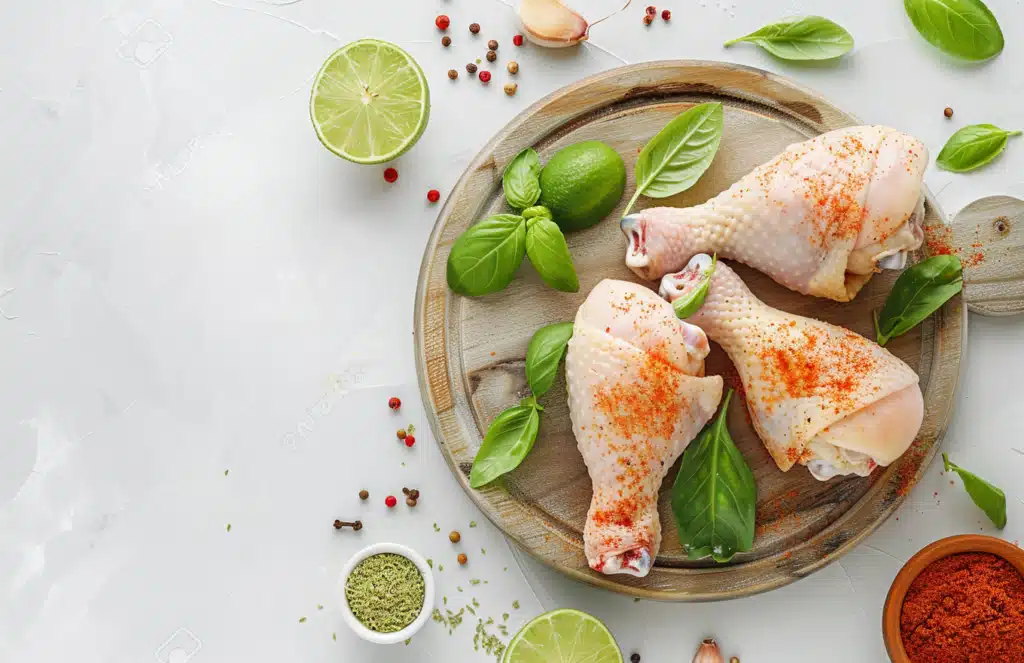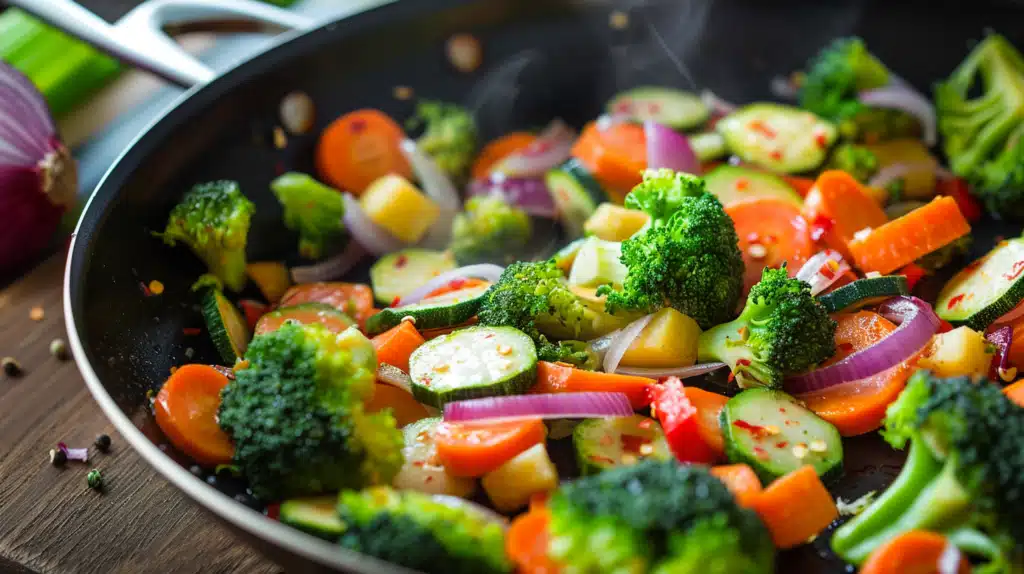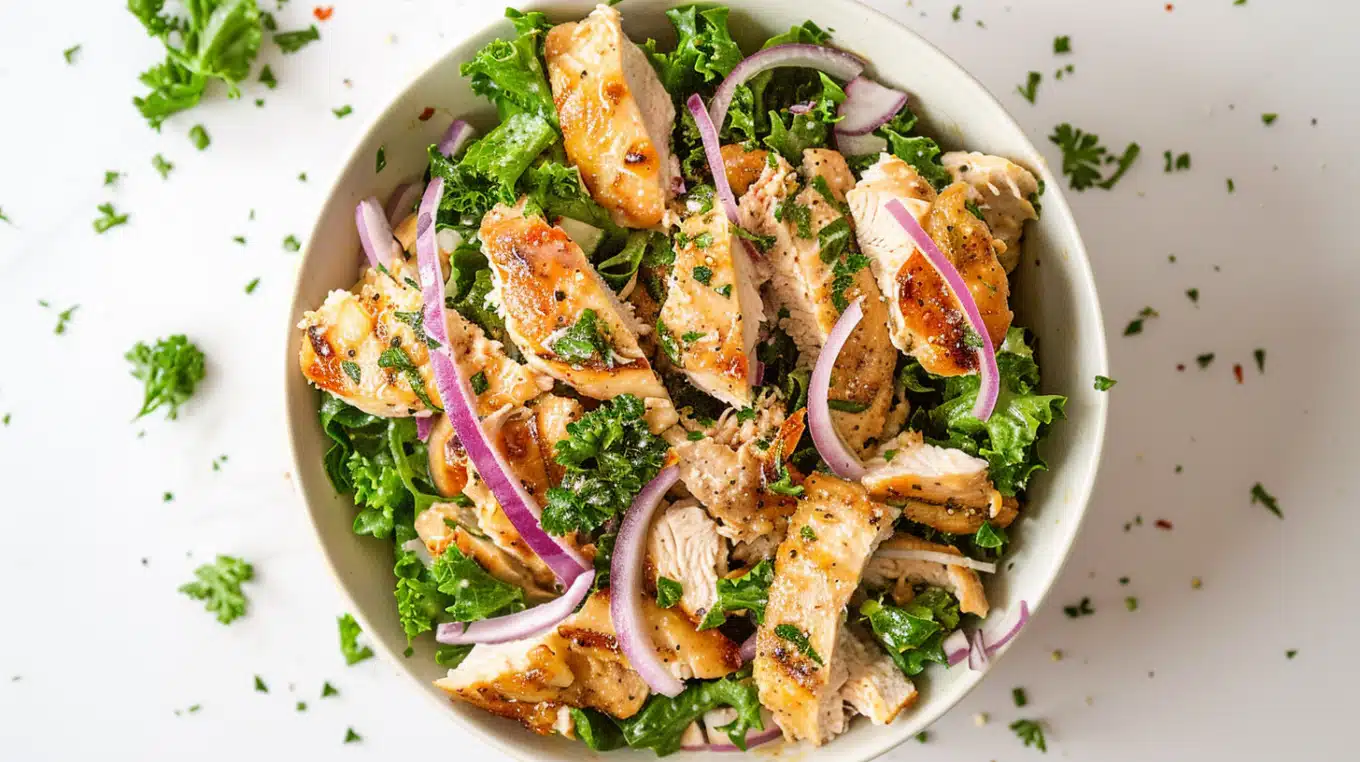You made a big batch of chicken salad for a gathering, but now you’re left with leftovers. You don’t want them to go to waste, but you’re unsure if freezing them is safe.
This guide explains the best practices for safely freezing chicken salad so you can enjoy it later without compromising its quality or risking foodborne illness.
Before freezing, we’ll cover the factors to consider, such as ingredients and freshness, proper storage techniques, and how to thaw and refresh your chicken salad for optimal taste and texture.
Understanding Food Safety for Chicken Salad
Food safety is crucial, especially when dealing with perishable items. If not handled, stored, or prepared properly, these foods can quickly become breeding grounds for harmful bacteria.
Neglecting food safety practices can lead to foodborne illnesses, which can cause severe discomfort and health issues.
Chicken salad typically includes various perishable ingredients, making it particularly important to follow food safety guidelines.
From the chicken itself to the mayonnaise and fresh vegetables, each component requires careful attention to prevent bacterial growth and contamination.
Specific Safety Concerns for Chicken Salad Ingredients
1. Chicken

Raw or undercooked chicken poses a significant risk, as it can harbor harmful bacteria like Salmonella.
To ensure safety, cook the chicken thoroughly until it reaches a safe internal temperature of 165°F (74°C).
This temperature kills potentially dangerous bacteria, making the chicken safe to consume.
2. Mayonnaise and Dairy Products

Mayonnaise, a staple ingredient in many chicken salad recipes, is sensitive to temperature changes.
Chicken salad made with mayonnaise must be kept refrigerated to prevent spoilage.
Freezing and thawing chicken salad with mayonnaise can cause separation and texture changes, leading to an unappetizing dish and potential food safety risks.
3. Vegetables and Add-Ins

Fresh vegetables like celery and onions and add-ins such as nuts and fruits should be handled carefully.
Thorough washing of produce helps remove dirt, pesticides, and potential contaminants.
When chopping vegetables, it’s crucial to use clean cutting boards and utensils to avoid cross-contamination from raw chicken or other sources of bacteria.
4. Eggs

While cooked egg whites can become rubbery and watery when frozen, this change in texture does not necessarily impact the safety of the chicken salad.
However, the altered texture of the eggs can negatively affect the overall quality and appeal of the dish.
Factors That Affect Safety When Freezing Chicken Salad
1. Importance of Initial Freshness
The initial freshness of the chicken salad plays a vital role in determining its safety and quality after freezing.
Using fresh ingredients ensures the chicken salad maintains its best possible taste and texture when thawed.
Moreover, starting with fresh components reduces the risk of harmful bacterial growth, as older ingredients may have already begun to spoil before freezing.
2. Preparation Hygiene
Proper hygiene while preparing chicken salad is essential for ensuring its safety.
Bacteria introduced through improper handling, such as using unwashed hands or contaminated utensils, can survive the freezing process and become active once the salad is thawed.
This can lead to foodborne illnesses, even if the salad was previously frozen.
3. Rapid Cooling and Storage Techniques for Chicken
Once the chicken has been cooked to the proper temperature, it’s important to cool it quickly to minimize the risk of bacterial growth.
The best way to achieve rapid cooling is to spread the cooked chicken on a shallow tray and place it in the refrigerator.
This method allows the chicken to cool more efficiently than in a large, deep container.
It’s also essential to remember that cooked chicken should not be left out at room temperature for more than two hours, as this can promote the growth of harmful bacteria.
4. Preparation of Other Ingredients
All vegetables should be thoroughly washed and dried before being chopped and added to the salad.
This step helps to remove any dirt, pesticides, or potential contaminants that may be present on the surface of the produce.
Ensuring all ingredients are clean and properly prepared can significantly reduce the risk of introducing harmful bacteria to your chicken salad before freezing.
Packing Methods: Techniques to Ensure Safety and Quality
1. Selection of Appropriate Containers
Choosing the right containers is crucial when freezing chicken salad. It’s best to use airtight freezer-safe containers to prevent exposure to air, which can lead to freezer burn and affect the quality of the salad.
Rigid containers offer better protection against crushing and help seal out air. Alternatively, heavy-duty freezer bags can be used, as they can be squeezed to remove excess air before sealing.
2. Prepping the Salad for Freezing
When preparing chicken salad for freezing, consider the ingredients that may not freeze well, such as mayonnaise or other dressings prone to separation.
In these cases, separating these ingredients before freezing and adding them fresh when serving the thawed salad is better. This approach helps maintain the texture and quality of the chicken salad.
3. Layering and Space Management
Flatten the chicken salad in a freezer bag or freeze portions individually in smaller containers to ensure quick and even freezing.
This method allows for better space management in the freezer and helps maintain the texture and quality of the salad by promoting rapid freezing.
4. Removing Air from Containers
Minimizing air contact with the chicken salad is essential for preventing freezer burn and preserving quality.
When using freezer bags, remove as much air as possible before sealing by using a straw to suck out the excess air.
For containers, place a layer of plastic wrap directly on the salad’s surface before sealing the lid to reduce air contact.
5. Labeling and Organization
Labeling each container or bag with the freezing date and contents is crucial for proper freezer inventory management.
This practice also ensures that the chicken salad is consumed within the optimal timeframe, typically up to 3 months, for the best quality.
6. Freezer Placement
When placing the packed chicken salad in the freezer, choose the coldest part, typically the back.
Ensure that the containers or bags are not in direct contact with the freezer walls, as this can lead to uneven freezing and potential freezer burn.
Thawing and Using Frozen Chicken Salad Safely
Thawing frozen foods safely is crucial to prevent bacterial growth. The method used to thaw chicken salad can greatly impact its safety and quality.
Improper thawing can lead to the development of harmful bacteria, which can cause foodborne illnesses.
Refrigerator Thawing
The safest way to thaw frozen chicken salad is in the refrigerator. This method ensures that the salad stays at a safe temperature (below 40°F or 4°C) throughout the thawing process, significantly reducing the risk of bacterial growth.
Timeframe for Thawing
The time needed to thaw chicken salad in the refrigerator can vary depending on the quantity and the type of container used.
Generally, it can take several hours or even overnight to thaw the salad completely.
Avoiding Room Temperature Thawing
It’s crucial to never thaw chicken salad on the kitchen counter or at room temperature.
These environments allow bacteria to multiply rapidly, increasing the risk of foodborne illnesses.
Best Practices for Using Thawed Chicken Salad
1. Time Limits for Consumption
Once thawed, chicken salad should be consumed within 1-2 days when kept refrigerated. Excessing this timeframe can increase the risk of bacterial growth and food poisoning.
2. Checking for Quality
Before consuming thawed chicken salad, always check for signs of spoilage, such as off odors, slimy texture, or discoloration. Discard the salad to avoid potential health risks if you notice any of these signs.
3. Refreshing the Salad
Consider adding a fresh dressing or fresh ingredients like herbs or crunchy vegetables to restore flavor and texture to thawed chicken salad.
This can help make the salad more appealing and enjoyable to eat.
Specific Changes in Texture and Taste
1. Mayonnaise-Based Dressings
Mayonnaise and similar emulsions used in chicken salad dressings can separate and become grainy or watery when frozen and thawed.
This separation can significantly affect the overall texture and taste of the salad, making it less appealing and enjoyable to eat.
2. Vegetable Components
Fresh vegetables commonly used in chicken salad, such as celery, onions, or apples, can lose their crispness and water content during the freezing and thawing.
This can result in a soggy texture, which may negatively impact the overall quality of the salad.
3. Detailed Considerations: Ingredient Selection
When planning to freeze chicken salad, choosing ingredients that freeze well is important. Avoid using ingredients known to degrade texture or flavor when frozen, such as hard-boiled eggs or delicate greens.
Instead, choose ingredients that maintain quality, like cooked chicken, and consider adding fresh components after thawing to enhance the salad’s taste and texture.
Recommendations for Freezing Techniques
1. Without Dressing
One of the best ways to ensure better quality when freezing chicken salad is to freeze it without the dressing or mayonnaise.
By adding these components fresh after thawing, you can avoid the texture and flavor changes that occur when these ingredients are frozen and thawed.
2. Alternative Dressings
If you prefer to freeze chicken salad with a dressing, consider alternative options that freeze better than mayonnaise.
Vinegar or oil-based dressings maintain their quality better when frozen and thawed, as they do not separate or degrade in texture like mayonnaise.
Conclusion
In conclusion, understanding the safety aspects of freezing chicken salad is crucial for maintaining quality and health.
While it’s possible to freeze chicken salad, ingredients, preparation methods, and proper storage must be considered to ensure the best results.
Following the recommended cooking, cooling, packing, and thawing guidelines can minimize the risks associated with bacterial growth and foodborne illnesses.
However, it’s essential to be aware that freezing may alter the texture and flavor of certain ingredients, particularly mayonnaise-based dressings and fresh vegetables.
To maximize safety and quality, consider freezing chicken salad without dressing or opting for alternative, freezer-friendly dressings.
Remembering these tips, you can safely enjoy your leftover chicken salad later without compromising your well-being.




